Operator City of Dallas Closed June 30, 2008 Demolished 17 November 2009 Architecture firm HKS, Inc. | Broke ground March 15, 1978 Opened 28 April 1980 Owner Dallas General contractor The Beck Group | |
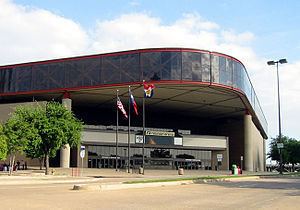 | ||
Capacity Basketball: 17,772 (1980–81), 17,134 (1981–83), 17,007 (1983–91), 17,502 (1991–96), 18,042 (1996–98), 18,121 (1998–99), 18,187 (1999–2008)Ice hockey: 16,500 (1980–91), 16,914 (1991–95), 16,924 (1995–97), 16,928 (1997–99), 17,001 (1999–2008)Indoor soccer: 16,626Concerts:End Stage: 18,628Center Stage: 19,071Half House: 9,663 Construction cost US$27 million($78.5 million in 2017 dollars) Similar McNichols Sports Arena, Izod Center, Omni Coliseum, Richfield Coliseum, Kemper Arena | ||
Reunion arena dallas demolition
Reunion Arena was an indoor arena located in the Reunion district of downtown Dallas, Texas. The arena served as the primary home of the National Basketball Association's Dallas Mavericks and the National Hockey League's Dallas Stars. Its capacity held accommodations for 18,187 basketball and 17,001 for ice hockey spectators.
Contents
- Reunion arena dallas demolition
- Tribute to reunion arena
- History
- Events
- Home teams
- Closure and demolition
- Former Reunion Arena site today
- Notable events
- References
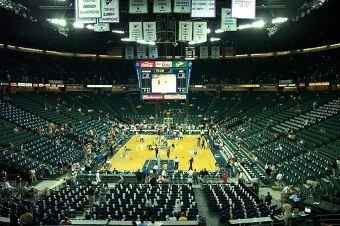
Reunion Arena was demolished in November 2009 and the site was cleared by the end of the year.
Tribute to reunion arena
History
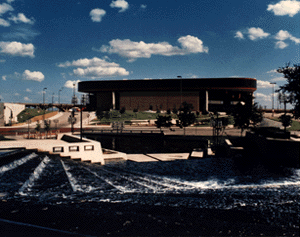
Reunion Arena was completed in 1980 at a cost of US$27 million. It was named for the early mid-19th century commune, La Reunion. Reunion Arena was notable for two lasts: it was the last NBA or NHL arena to be built without luxury suites, and it was the last NHL arena to still use an American Sign and Indicator scoreboard (though not the last in the NBA—see Charlotte Coliseum). The color matrix messageboards on that scoreboard were replaced in 1991 with Sony Jumbotron video screens.
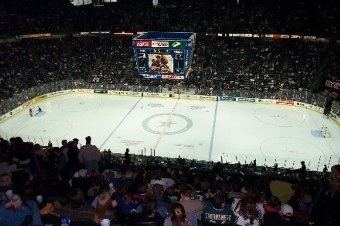
Reunion Arena also hosted the WCT Tennis Tournament in the 1980s, including Virginia Slims Invitational Tournament. Due to scheduling conflicts in 1984, the WCT Tennis Tournament forced the Dallas Mavericks to play Game 5 of their first ever playoff series at Moody Coliseum, against the Seattle SuperSonics. While Southern Methodist University competed in the Southwest Conference, Reunion Arena was known by University of Arkansas Razorbacks fans, as Barnhill South, due to the big following by the Arkansas fans away from home; the Barnhill Arena was the home to all UA games until 1993. Reunion Arena hosted the Southwest Conference's basketball tournament in the 1980s and 1990s, as well as the 1986 NCAA Final Four.
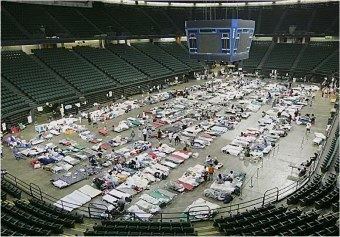
In 1994, U.S. President Bill Clinton visited the arena to watch the University of Arkansas basketball team play in the NCAA Tournament.
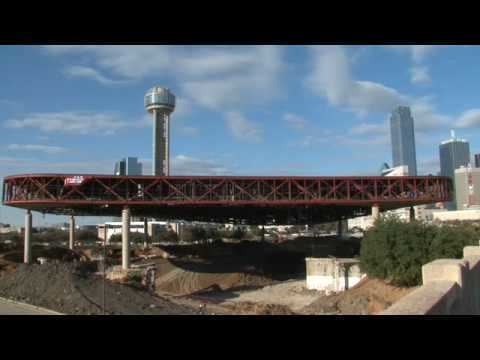
In late 2005, the arena and the Dallas Convention Center were used as the primary Dallas shelters for evacuees of Hurricane Katrina.
Events
The arena featured 30,000 ft² (2,790 m²) of floor space and had great sightlines, making it ideal for a number of events and games, including many high school graduations. Though The Who was promoted as the first concert at Reunion on July 2, 1980, May 9, 1980 was the first time a musical act performed at Reunion. P-Funk performed touring with SHOWCO sound and lights. Two other concerts played there in late June: Foghat and Pat Travers on June 25, 1980; and Ted Nugent, Scorpions, and Def Leppard on June 26, 1980. The rock band Journey played three consecutive shows at the arena in July 1983, and again in December 1986. Van Halen played three shows in June 1984, Judas Priest played June 27, 1986 recording the entire show which parts can be found on the Priest...Live! album. A full concert DVD was released as well. Pink Floyd played three consecutive shows at Reunion in November 1987, and Guns N' Roses played a show in December 1987. Pop songstress Whitney Houston played two sold-out concerts at Reunion in September 1987. The video for the Scorpions' song "Still Loving You" was filmed there, and in 1985 Mötley Crüe shot the video of the song "Home Sweet Home" there as well.
Country music superstar Garth Brooks filmed his first television special, This Is Garth Brooks, in the arena during two sold-out concerts in September 1991. The concert became noteworthy after Brooks and guitarist Ty England took two guitars together and smashed them on stage. Another country music star, Shania Twain, once performed her Come on Over Tour in the arena on September 12, 1998 and was filmed in her first DVD released Shania Twain Live.
Reunion was also a venue that was frequently used by World Class Championship Wrestling in the 1980s, in which the organization held many, if not all of its bi-monthly Star Wars events.
Home teams
The arena was the home of the Dallas Mavericks from 1980 to 2001 and the Dallas Stars from 1993 to 2001. Both teams moved to the American Airlines Center in 2001. The Dallas Desperados Arena Football team used the arena for its 2003 season but ultimately returned to American Airlines Center.
The arena's last remaining full-time sports tenant was the MISL Dallas Sidekicks, but the club was inactive after the fall of 2004.
Closure and demolition
After a unanimous vote by the Dallas City Council, Reunion Arena officially closed on June 30, 2008. In August 2008, the council said it would implode the arena if it could find an entity willing to foot the bill. The council hoped for the implosion to be part of a movie scene with the film company picking up the tab for the implosion. When no filmmaker seemed interested, the city decided to demolish it using other methods, a process which took several months.
Demolition was officially completed on November 17, 2009 and the site was completely cleared by the end of the year. Post-demolition, the site has seen little use. In 2011, Prince was to perform as part of Super Bowl XLV-related festivities, but the show was canceled due to inclement weather. And in September 2012, Cirque du Soleil's Koozå took place here. As of October 2013, the adjacent parking garage remained standing and there were no plans for construction on the site.
Former Reunion Arena site today
The Reunion Arena site today is now known as Reunion Park with events throughout the year.
